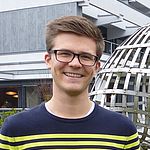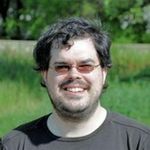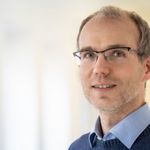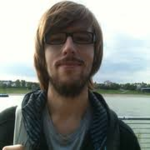The goal of the project is to obtain new insights into certain asymptotic topological and homological invariants of groups, specifically
- the \(\Sigma\)-invariants introduced by Bieri-Neumann-Strebel and Bieri-Renz,
- universal \(L^2\)-torsion introduced by Friedl-Lück, and
- higher generation introduced by Abels-Holz.
In the course of studying these invariants a prominent role is played by parabolic subgroups (of algebraic groups and Coxeter groups) and generalizations of these (in automorphisms of right-angles Artin groups, braid groups, etc.).
Publications
Given a Chevalley group $\mathcal{G}$ of classical type and a Borel subgroup $\mathcal{B} \subseteq \mathcal{G}$, we compute the $\Sigma$-invariants of the $S$-arithmetic groups $\mathcal{B}(\Z[1/N])$, where $N$ is a product of large enough primes. To this end, we let $\mathcal{B}(\Z[1/N])$ act on a Euclidean building $X$ that is given by the product of Bruhat--Tits buildings $X_p$ associated to $\mathcal{G}$, where $p$ is a prime dividing $N$. In the course of the proof we introduce necessary and sufficient conditions for convex functions on $\CAT(0)$-spaces to be continuous. We apply these conditions to associate to each simplex at infinity $\tau \subset \pinf X$ its so-called parabolic building $X^{\tau}$ and to study it from a geometric point of view. Moreover, we introduce new techniques in combinatorial Morse theory, which enable us to take advantage of the concept of essential $n$-connectivity rather than actual $n$-connectivity. Most of our building theoretic results are proven in the general framework of spherical and Euclidean buildings. For example, we prove that the complex opposite each chamber in a spherical building $\Delta$ contains an apartment, provided $\Delta$ is thick enough and $\Aut(\Delta)$ acts chamber transitively on $\Delta$.
| Journal | Transactions of the American Mathematical Society |
| Link to preprint version | |
| Link to published version |
Related project(s):
8Parabolics and invariants
The main theme of this paper is higher virtual algebraic fibering properties of right-angled Coxeter groups (RACGs), with a special focus on those whose defining flag complex is a finite building.
We prove for particular classes of finite buildings that their random induced subcomplexes have a number of strong properties, most prominently that they are highly connected.
From this we are able to deduce that the commutator subgroup of a RACG, with defining flag complex a finite building of a certain type, admits an epimorphism to Z whose kernel has strong topological finiteness properties.
We additionally use our techniques to present examples where the kernel is of type F_2 but not FP_3, and examples where the RACG is hyperbolic and the kernel is finitely generated and non-hyperbolic.
The key tool we use is a generalization of an approach due to Jankiewicz--Norin--Wise involving Bestvina--Brady discrete Morse theory applied to the Davis complex of a RACG, together with some probabilistic arguments.
| Journal | Journal of Topology |
| Link to preprint version | |
| Link to published version |
Related project(s):
8Parabolics and invariants
Given a finitely generated group G that is relatively finitely presented with respect to a collection of peripheral subgroups, we prove that every infinite subgroup H of G that is bounded in the relative Cayley graph of G is conjugate into a peripheral subgroup. As an application, we obtain a trichotomy for subgroups of relatively hyperbolic groups. Moreover we prove the existence of the relative exponential growth rate for all subgroups of limit groups.
| Journal | Algebraic and Geometric Topology |
| Link to preprint version | |
| Link to published version |
Related project(s):
8Parabolics and invariants
We introduce a new invariant of finitely generated groups, the ambiguity function, and we prove that every finitely generated acylindrically hyperbolic group has a linearly bounded ambiguity function. We use this result to prove that the relative exponential growth rate $\lim \limits_{n \rightarrow \infty} \sqrt[n]{\abs{B^{X}_H(n)}}$ of a subgroup $H$ of a finitely generated acylindrically hyperbolic group $G$ exists with respect to every finite generating set $X$ of $G$, if $H$ contains a loxodromic element of $G$. Further we prove that the relative exponential growth rate of every finitely generated subgroup $H$ of a right-angled Artin group $A_{\Gamma}$ exists with respect to every finite generating set of $A_{\Gamma}$.
| Journal | Journal of Group Theory |
| Link to preprint version | |
| Link to published version |
Related project(s):
8Parabolics and invariants
We study $\ell^2$ Betti numbers, coherence, and virtual fibring of random groups in the few-relator model. In particular, random groups with negative Euler characteristic are coherent, have $\ell^2$ homology concentrated in dimension 1, and embed in a virtually free-by-cyclic group with high probability. Similar results are shown with positive probability in the zero Euler characteristic case.
Related project(s):
8Parabolics and invariants
We show that a finitely generated residually finite rationally solvable (or RFRS) group G is virtually fibred, in the sense that it admits a virtual surjection to $\mathbb Z$ with a finitely generated kernel, if and only if the first $L^2$-Betti number of G vanishes. This generalises (and gives a new proof of) the analogous result of Ian Agol for fundamental groups of 3-manifolds.
| Journal | J. Amer. Math. Soc |
| Link to preprint version | |
| Link to published version |
Related project(s):
8Parabolics and invariants
We study the Newton polytopes of determinants of square matrices defined over rings of twisted Laurent polynomials. We prove that such Newton polytopes are single polytopes (rather than formal differences of two polytopes); this result can be seen as analogous to the fact that determinants of matrices over commutative Laurent polynomial rings are themselves polynomials, rather than rational functions. We also exhibit a relationship between the Newton polytopes and invertibility of the matrices over Novikov rings, thus establishing a connection with the invariants of Bieri-Neumann-Strebel (BNS) via a theorem of Sikorav.
We offer several applications: we reprove Thurston's theorem on the existence of a polytope controlling the BNS invariants of a 3-manifold group; we extend this result to free-by-cyclic groups, and the more general descending HNN extensions of free groups. We also show that the BNS invariants of Poincare duality groups of type F in dimension 3 and groups of deficiency one are determined by a polytope, when the groups are assumed to be agrarian, that is their integral group rings embed in skew-fields. The latter result partially confirms a conjecture of Friedl.
We also deduce the vanishing of the Newton polytopes associated to elements of the Whitehead groups of many groups satisfying the Atiyah conjecture. We use this to show that the L2-torsion polytope of Friedl-Lueck is invariant under homotopy. We prove the vanishing of this polytope in the presence of amenability, thus proving a conjecture of Friedl-Lueck-Tillmann.
| Journal | Invent. Math. |
| Link to preprint version | |
| Link to published version |
Related project(s):
8Parabolics and invariants
We investigate rigidity properties of S-arithmetic Kac-Moody groups in characteristic 0.
| Journal | J. Lie Theory |
| Volume | 30 |
| Pages | 9-23 |
| Link to preprint version | |
| Link to published version |
Related project(s):
8Parabolics and invariants
Relying on the theory of agrarian invariants introduced in previous work, we solve a conjecture of Friedl-Tillmann: we show that the marked polytopes they constructed for two-generator one-relator groups with nice presentations are independent of the presentations used. We also show that, when the groups are additionally torsion-free, the agrarian polytope encodes the splitting complexity of the group. This generalises theorems of Friedl-Tillmann and Friedl-Lück-Tillmann.
| Journal | To appear in J. Lond. Math. Soc. |
| Link to preprint version |
Related project(s):
8Parabolics and invariants
We consider the coset poset associated with the families of proper subgroups, proper subgroups of finite index, and proper normal subgroups of finite index. We investigate under which conditions those coset posets have contractiblegeometric realizations.
Related project(s):
8Parabolics and invariants
For every finite graph Γ, we define a simplicial complex associated to the outer automorphism group of the RAAG A_Γ. These complexes are defined as coset complexes of parabolic subgroups of Out^0(A_Γ) and interpolate between Tits buildings and free factor complexes. We show that each of these complexes is homotopy Cohen-Macaulay and in particular homotopy equivalent to a wedge of d-spheres. The dimension d can be read off from the defining graph Γ and is determined by the rank of a certain Coxeter subgroup of Out^0(A_Γ). In order to show this, we refine the decomposition sequence for Out^0(A_Γ) established by Day-Wade, generalise a result of Brown concerning the behaviour of coset posets under short exact sequences and determine the homotopy type of relative free factor complexes associated to Fouxe-Rabinovitch groups.
Related project(s):
8Parabolics and invariants
We prove the K- and L-theoretic Farrell-Jones Conjecture with coefficients in an additive category for every normally poly-free group, in particular for even Artin groups of FC-type, and for all groups of the form A⋊Z where A is a right-angled Artin group. Our proof relies on the work of Bestvina-Fujiwara-Wigglesworth on the Farrell-Jones Conjecture for free-by-cyclic groups.
Related project(s):
8Parabolics and invariants
We construct examples of fibered three-manifolds with fibered faces all of whose monodromies extend to a handlebody.
Related project(s):
8Parabolics and invariants
We prove that $\mathrm{Aut}(F_n)$ has Kazhdan's property (T) for every $n \geqslant 6$. Together with a previous result of Kaluba, Nowak, and Ozawa, this gives the same statement for $n\geqslant 5$.
We also provide explicit lower bounds for the Kazhdan constants of $\mathrm{SAut}(F_n)$ (with $n \geqslant 6$) and of $\mathrm{SL}_n(\mathbb Z)$ (with $n \geqslant 3$) with respect to natural generating sets.
In the latter case, these bounds improve upon previously known lower bounds whenever $n> 6$.
Related project(s):
8Parabolics and invariants
We show that the complex of free factors of a free group of rank n > 1 is homotopy equivalent to a wedge of spheres of dimension n-2. We also prove that for n > 1, the complement of (unreduced) Outer space in the free splitting complex is homotopy equivalent to the complex of free factor systems and moreover is (n-2)-connected. In addition, we show that for every non-trivial free factor system of a free group, the corresponding relative free splitting complex is contractible.
Related project(s):
8Parabolics and invariants
We develop the theory of agrarian invariants, which are algebraic counterparts to $L^2$-invariants. Specifically, we introduce the notions of agrarian Betti numbers, agrarian acyclicity, agrarian torsion and agrarian polytope.
We use the agrarian invariants to solve the torsion-free case of a conjecture of Friedl--Tillmann: we show that the marked polytopes they constructed for two-generator one-relator groups with nice presentations are independent of the presentations used. We also show that, for such groups, the agrarian polytope encodes the splitting complexity of the group. This generalises theorems of Friedl--Tillmann and Friedl--Lück--Tillmann. Finally, we prove that for agrarian groups of deficiency $1$, the agrarian polytope admits a marking of its vertices which controls the Bieri--Neumann--Strebel invariant of the group, improving a result of the second author and partially answering a question of Friedl--Tillmann.
Related project(s):
8Parabolics and invariants
We prove that if a quasi-isometry of warped cones is induced by a map between the base spaces of the cones, the actions must be conjugate by this map. The converse is false in general, conjugacy of actions is not sufficient for quasi-isometry of the respective warped cones. For a general quasi-isometry of warped cones, using the asymptotically faithful covering constructed in a previous work with Jianchao Wu, we deduce that the two groups are quasi-isometric after taking Cartesian products with suitable powers of the integers.
Secondly, we characterise geometric properties of a group (coarse embeddability into Banach spaces, asymptotic dimension, property A) by properties of the warped cone over an action of this group. These results apply to arbitrary asymptotically faithful coverings, in particular to box spaces. As an application, we calculate the asymptotic dimension of a warped cone and improve bounds by Szabo, Wu, and Zacharias and by Bartels on the amenability dimension of actions of virtually nilpotent groups.
In the appendix, we justify optimality of our result on general quasi-isometries by showing that quasi-isometric warped cones need not come from quasi-isometric groups, contrary to the case of box spaces.
| Journal | Proc. Lond. Math. Soc. |
| Publisher | Wiley |
| Link to preprint version | |
| Link to published version |
Related project(s):
8Parabolics and invariants
We prove that the smallest non-trivial quotient of the mapping class group of a connected orientable surface of genus at least 3 without punctures is Sp_2g(2), thus confirming a conjecture of Zimmermann. In the process, we generalise Korkmaz's results on C-linear representations of mapping class groups to projective representations over any field.
| Journal | To appear in Groups Geom. Dyn. |
| Link to preprint version |
Related project(s):
8Parabolics and invariants
Team Members
Benjamin Brück
Doctoral student
Universität Bielefeld
benjamin.brueck.maths(at)gmail.com
Prof. Dr. Kai-Uwe Bux
Project leader
Universität Bielefeld
kaiuwe.bux(at)gmail.com
Prof. Dr. Dawid Kielak
Project leader
University of Oxford
kielak(at)maths.ox.ac.uk
Prof. Dr. Ralf Köhl
Researcher,
Project leader
Christian-Albrechts-Universität zu Kiel
koehl(at)math.uni-kiel.de
Prof. Dr. Stefan Witzel
Project leader
JLU Gießen
stefan.witzel(at)math.uni-giessen.de
Former Members
Eduard Schesler
Doctoral student
Fern-Universität Hagen
eduard.schesler(at)fernuni-hagen.de






